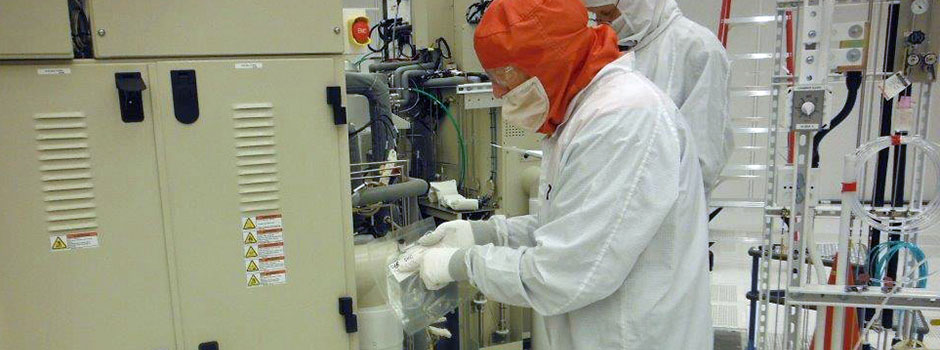
Semiconductor Environmental Safety & Health – Clean Rooms
We have substantial clean room experience and are knowledgeable of processes and potential health risks for workers, and the potential for chemical releases to the environment. We also address quality control concerns about product (wafers and chips) with standard chemical air sampling and analytical methods.
We advise clients about regulatory and industry standards for controlling worker exposures to chemicals, including:
- Wet etch: acids, including hydrochloric acid, hydrofluoric acid, nitric acid, sulfuric acid & phosphoric acid, and developers such as tetramethyl ammonium hydroxide (TMAH).
- Plasma (dry) etch: gases, such as boron trifluoride, nitrogen trifluoride, tungsten hexafluoride, chlorine and hydrogen chloride.
- Photo: solvent vapors (photoresist carriers), including glycol ethers like 2-ethoxyethyl acetate (EGMEA), 1-methoxy-2-propyl acetate (PGMEA), ethyl lactate, isobutyl isobutyrate (IBIB), n-propoxy propanol, 2-pentanone, and ethyl-3-ethoxy propionate (E3EE). Also, photoresist stripper solvents such as n-methyl-2-pyrrolidinone (M-Pyrol) and PGMEA.
- Diffusion and Implant: Gases of silane, dichlorosilane, nitrogen trifluoride, and dopants, including solid source arsenic, and hydrides of arsine, phosphine and boron trifluoride gas.
- Maintenance operations: worker exposures with maintenance on ion implanter, plasma etcher, and wet benches.
- Radiation and noise: worker exposures to X-ray from ion implanters and x-ray cabinets, microwave and radiofrequency ( MW/RF) from plasma etchers, and noise.
- Tracer gas testing: Evaluate the performance of the exhaust system of a tool to demonstrate the effective control of toxic and dangerous gases. We follow the guidelines of the SEMI S6 7070E (2007) standard, now revised as SEMI draft document 4494 “Test Method (SF6 Tracer Gas) for Enclosures”.
![]()



